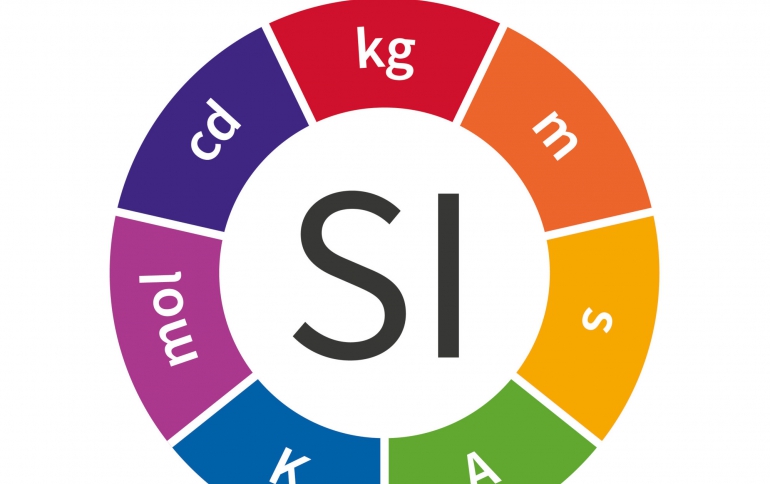
The International System of Units (SI) Redefines Kilogram, Ampere and Kelvin
Scientists at the 26th General Conference on Weights and Measures (CGPM) on Friday voted to change the definition of the kilogram as well as three other units of measurement -- the ampere, the kelvin and the mole.
The 26th General Conference on Weights and Measures (CGPM) is taking place in Versailles in November 2018. At this meeting, the CGPM approved a resolution to revise the definitions of the International System of Units, the SI, which is based on the second, the metre, the kilogram, the ampere, the kelvin, the mole and the candela (the SI base units).
Over the last 50 years, scientists have measured constants of nature, such as the speed of light and the Planck constant, with increasing accuracy; indeed the metre was already redefined back in 1983 in terms of the speed of light. The inherent stability of these constants are used for underpinning new definitions of the SI units and preparing the measurement system to meet the future demands of science and technology.
The approved resolution means that SI will be based on seven physical constants, and thus inherently stable. Most notably, this will mark the end of the last remaining physical artefact in the SI system – a cylinder of metal known as the International Prototype of the Kilogram (IPK).
The approach takes physical artefacts out of the equation: the kilogram is still defined by a physical object equal to the mass of the International Prototype of the Kilogram (IPK). But the new revision removes the need for this last artefact.
For the first time, all the definitions will be separate from their realizations: instead of definitions becoming outdated as we find better ways to realize units, definitions will remain constant and future-proof. For example, the ampere is currently defined as "the magnetic force between two wires at a certain distance apart", which means that it uses the realization of a measurement to define it. However, advancements like the advent of the Josephson and quantumHall effects, have revealed better ways of realizing the ampere, making the original approach obsolete.
As part of the Revised SI, the seven base units (second, metre, kilogram, ampere, kelvin, mole and candela) and their corresponding base quantities (time, length, mass, electric current, thermodynamic temperature, amount of substance and luminous intensity) remain unchanged.
What is changing is the kilogram (kg), ampere (A), kelvin (K), and mole (mol) - all these units will have new definitions.
- The new definitions affect four of the base units:
- The kilogram in terms of the Planck constant (h)
- The ampere in terms of the elementary charge (e)
- The kelvin in terms of the Boltzmann constant (k)
- The mole in terms of the Avogadro constant (NA)
The kilogram is now defined in terms of the Planck constant. The kilogram can then be realized by any suitable method (for example the Kibble (watt) balance or the Avogadro (X-ray crystal density) method). Users will be able to obtain traceability to the SI from the same sources used at present (the BIPM, national metrology institutes and accredited laboratories).
The value of the Planck constant will be chosen to ensure that there will be no change in the SI kilogram at the time of redefinition. The uncertainties offered by NMIs to their calibration customers will also be broadly unaffected.
The ampere and other electrical units, as practically realized at the highest metrological level, become fully consistent with the definitions of these units. The transition from the 1990 convention to the revised SI will result in small changes to all disseminated electrical units. For the vast majority of measurement users, no action need be taken as the volt will change by about 0.1 parts per million and the ohm will change by even less. Practitioners working at the highest level of accuracy may need to adjust the values of their standards and review their measurement uncertainty budgets.
The kelvin is redefined with no immediate effect on temperature measurement practice or on the traceability of temperature measurements, and for most users, it will pass unnoticed. The redefinition lays the foundation for future improvements. A definition free of material and technological constraints enables the development of new and more accurate techniques for making temperature measurements traceable to the SI, especially at extremes of temperature.
After the redefinition, the guidance on the practical realization of the kelvin supports its world-wide dissemination by describing primary methods for measurement of thermodynamic temperature and equally through the defined scales ITS-90 and PLTS-2000.
The mole is redefined with respect to a specified number of entities (typically atoms or molecules) and will no longer depend on the unit of mass, the kilogram. Traceability to the mole can still be established via all previously employed approaches including, but not limited to, the use of mass measurements along with tables of atomic weights and the molar mass constant Mu. Atomic weights will be unaffected by this change in definition and Mu will still be 1 g/mol, although now with a measurement uncertainty. This uncertainty will be so small that the revised definition of the mole will not require any change to common practice.
On the surface, it will appear that not much has changed. In the same way that if you replaced the decaying foundations of a house with robust new ones, it may not be possible to identify the difference from the surface, but some substantial changes would have taken place to ensure the longevity of the property.
The new definitions will come into practice on World Metrology Day, 20 May 2019.













